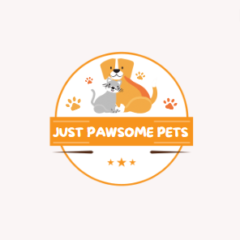Ladder of Canine Aggression (Or Communication)
By admin / January 8, 2023 / No Comments / Uncategorized
Aggression has an escalation process, and it’s something we call the ladder of canine aggression, or ladder of canine communication.
Canine communication isn’t the easiest things for us humans to get our heads around. A lot of the time we ask our dogs to speak more English than we speak dog, so this is a big opportunity to learn to speak dog, and consequently advocate for them as best you can – and prevent anyone getting injured along the way.
Part of that is understanding the canine ladder of aggression, and giving us an understanding of the paths our dogs take to communicate their discomfort.
What Is The Canine Ladder of Aggression?
The ladder is a simplified escalation process that your dog uses to warn you that they’re uncomfortable.
Our dogs don’t have a huge way to communicate with us humans – and we expect them to understand us so much, but, we often neglect to learn how they communicate with us. But this one is really important, because dogs can be immensely subtle. For example, this picture….
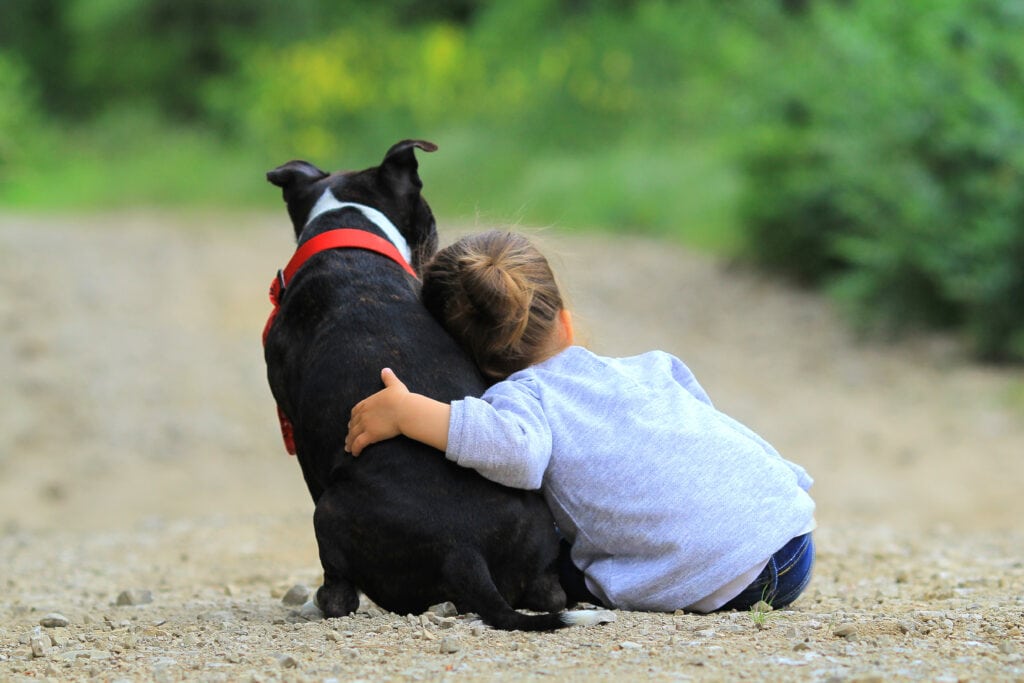
Do dogs go through phases of aggression?
Yes. During puppy development, there are a few things that can be perceived as peaks of ‘aggression’. Such as teething (because your puppy bites more).
‘Aggression’ can also spike in the second fear phase because your dog is developing fears that they may have been unsure of before, and choosing to escalate, this is actually when reactivity tends to develop.
But then there are also situations that can occur that provoke more severe reactions from your dog, such as;
- Pain
- Discomfort
- Intense situations
- People or dogs who don’t listen.
It’s good to note that ‘aggression’ isn’t always aggression. Often times we mistake puppy biting for puppy aggression, or, similarly, with reactive dogs. This is why the ladder of aggression is often referred to as the ladder of communication, because it’s primarily communication.
At what age do most dogs become aggressive?
Usually in the second fear phase, which occurs somewhere in the region of six to eighteen months – depending on the size of your dog (and sometimes even the breed!).
Whilst we’re here, it’s good to note that “Aggression” is usually mislabeled reactivity.
What Should I Do If I See These Signs?
Essentially, when you start seeing them and applying them in context (because not all of these just denote aggression, they denote stress), then you need to listen.
Whatever you’re doing to cause that, I’d strongly advise backing off. Ideally, we want to note these moments of discomfort and not force our dogs through these things. Then, if we can find a pattern, we either can note a training opportunity or things we need to avoid.
How you decide on those, will depend on whether they’re a thing your dog has to do. For example, if they’re showing these stress signs at the groomers, or the vet? Then it might be time to look at desensitising some of the processes and environments, or finding a more cooperative professional.
REMEMBER!! Never, ever punish a growl! It might feel scary for us humans, but it’s just communication. Communication is never a bad thing.
Step 1 – Lip licks & stress yawns
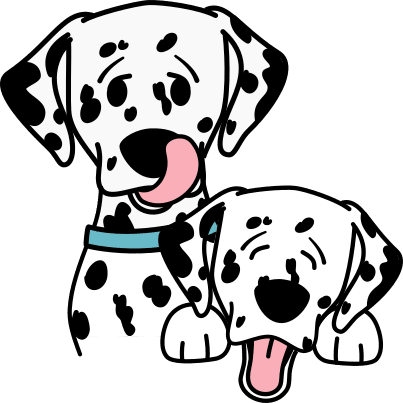
The lip lick may be as subtle as a tongue flip over the lips, it may also be a full nose lick.
The yawn is usually very exaggerated, and sometimes comes with a fake squeaky noise behind it.
These two are usually very early signs that your dog is a little stressed, and that they want space. It’s why it’s also on the displacement signals list.
Step 2 – Looking Away
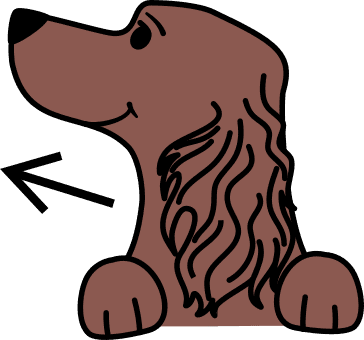
Looking away from whatever is going on gives your dog the opportunity to express the fact that they don’t want to be a part of whatever is going on. It’s also a displacement signal.
If your dog looks away from whatever is going on, it’s time to give some space. Ideally step 1 to 3 is where we notice that our dog is uncomortable.
Step 3 – Turning body away

This might be as subtle as leaning away from the problem, shifting their weight from close to far, and positioning their head further. That added distance can help them feel more confident. If we allow this space to be gained and don’t invade it, we may just mitigate the whole escalation (aka, do that!).
But, next time? Try and note what was making them uncomfortable and tackle it!
Step 4 – Walking away
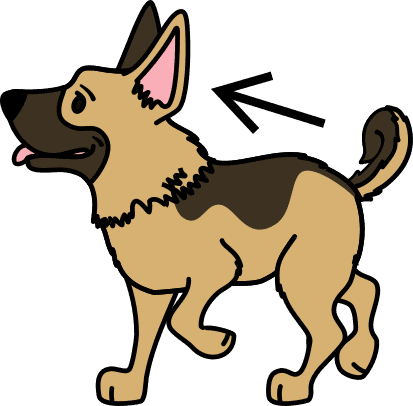
This is a way of avoiding, and typically, if your dog chooses this, you’re still pretty safe because this is a mature way of dealing with a conflict (Especially for a dog!), so, if you can advocate for them, by stopping whatever it is from following? Would be great.
Of course, if instead you can catch earlier signs, you’ll do great at removing opportunities for stress.
Step 5 – crouching slightly & ears back

usually it’s paired with some back-ears and likely some ‘whale eye’ to show your dogs general fear.
Step 6 – putting their body to the floor and tucking tail
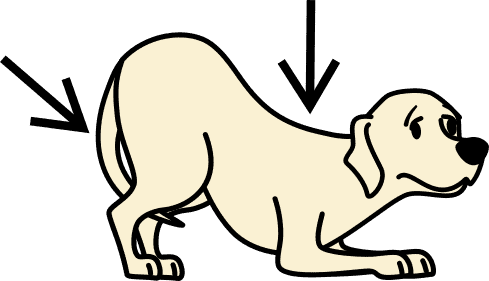
Sometimes with tucked tails it can be hard to tell, spitz breeds it’s lovely and obvious, but less so with something like a labrador who might have a naturally low tail carriage.
Step 7 – Exposing the tummy
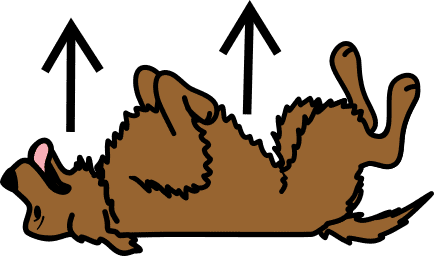
The tummy is a very exposed place for your dog, it’s where all their vital organs are, and it’s quite exposed. It’s both a symbol of trust, and a total show of “I’m not a threat”
Step 8 – Stiffening
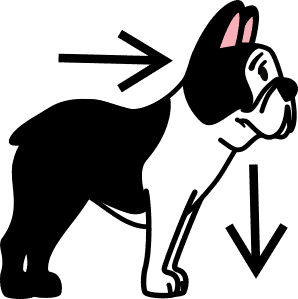
Your dog is trying to communicate that enough is enough.
You may see that stiffening come in the form of rigid posture, a low pose with intense eye contact (or close to eye contact).
Step 9 – Growl
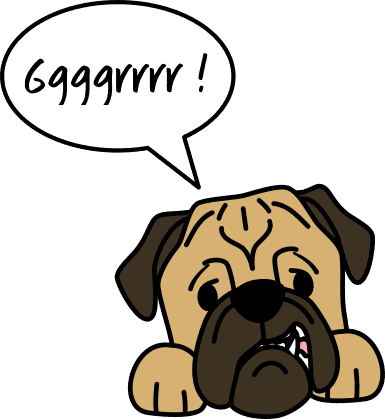
We want our dogs to know that they are being heard, and if they’ve felt unheard to the point they growl, then next time, we need to learn to listen earlier.
Note: We do not ever punish a growl. We have to remember this is purely communication! When we punish a growl we begin to start teaching our dogs that if they growl, bad things happen. If bad things happen, they learn to skip that step, and will skip this step and escalate straight to the bite.
Step 10 – Air snaps & vocalising
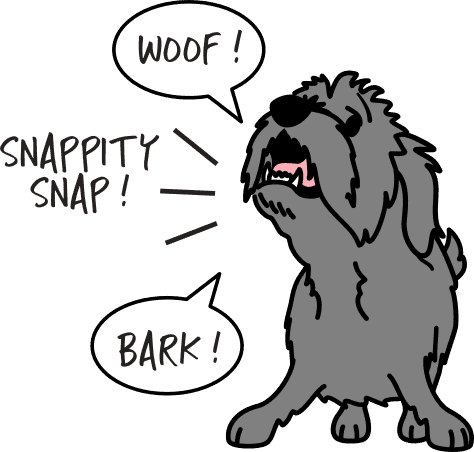
They may have whale eye along with this and generally they’ll be leaning away from the source of their issue. This (especially with small dogs) can often be laughed off, but it really is important that no matter the size of our dogs, that we listen.
Step 11 – Bite
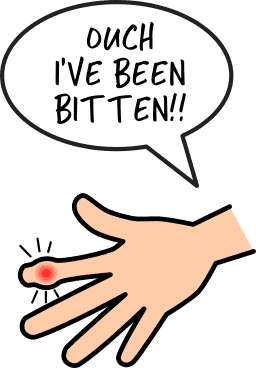
A bite means that your dog hasn’t been listened to, typically. Normally, these things happen step by step, that this escalation will lead to this if your dogs discomfort is ignored.
There are grades of bite, but we won’t go into those today, because ideally? We don’t want a bite at all.
It’s important that we avoid this. No dog should be driven to this where at all possible. And if that means getting a muzzle to prevent a bite risk? That’s incredibly important.
A Note About The “Bite Out Of The Blue”
It’s often that when we look at headlines or news articles that the dog bit someone “Out of the blue” that the dog had “never shown signs of aggression” before.
And it may have been the case.
However, most of the time it’s not, it’s just that these signs have been missed. That the family didn’t have the mind or eyes to recognise what was going on in front of them. And it’s one of the big, big reasons I encourage you to familiarise yourself with these signs.
Do All Dogs Show All Of These Signs?
No – and that’s a really important thing.
Most dogs show most of these signs. However, it can be a case that your dog has been taught to ignore certain stages (because they don’t work), or because they’ve been punished for showing that emotion, or, lastly, that they never learned to use that particular skill.
Every dog is an individual, and this ladder is designed to be a guide.
What if discomfort is temporary, but you need to manage the situation?
Great question. Sometimes we just have to be in a situation, for example, if your dog has a broken leg, and they’re growling at the vet, it’s not really an option to just take them home. This is the sort of situation where proper desensitization to a proper muzzle is going to be a really great, but in an emergency muzzle is also an option to keep everyone safe.
Remember: Situation is important
When we look at canine body language, we look at not just the action, but the situation that that action has been expressed within. Because yes, a yawn is one of the first signs, but dogs also yawn when they’re tired. So, remember to read a situation as best you can, and, a little extra caution? Is rarely a bad thing.
Advocating for your dog is never a bad thing, but if you’re worried about what you see? Get in touch.
Author, Ali Smith
Ali Smith is the Positive Puppy Expert, dog trainer and is the founder of Rebarkable. She is passionate about helping puppy parents get things right, right from the start. To help create a puppy capable of being a confident and adaptable family member and keep puppies out of shelters.
Ali has won multiple awards for her dog training, and has had her blog (this blog!) rated as 2021 & 2022 worlds’ best pet blog!
Views: 0
